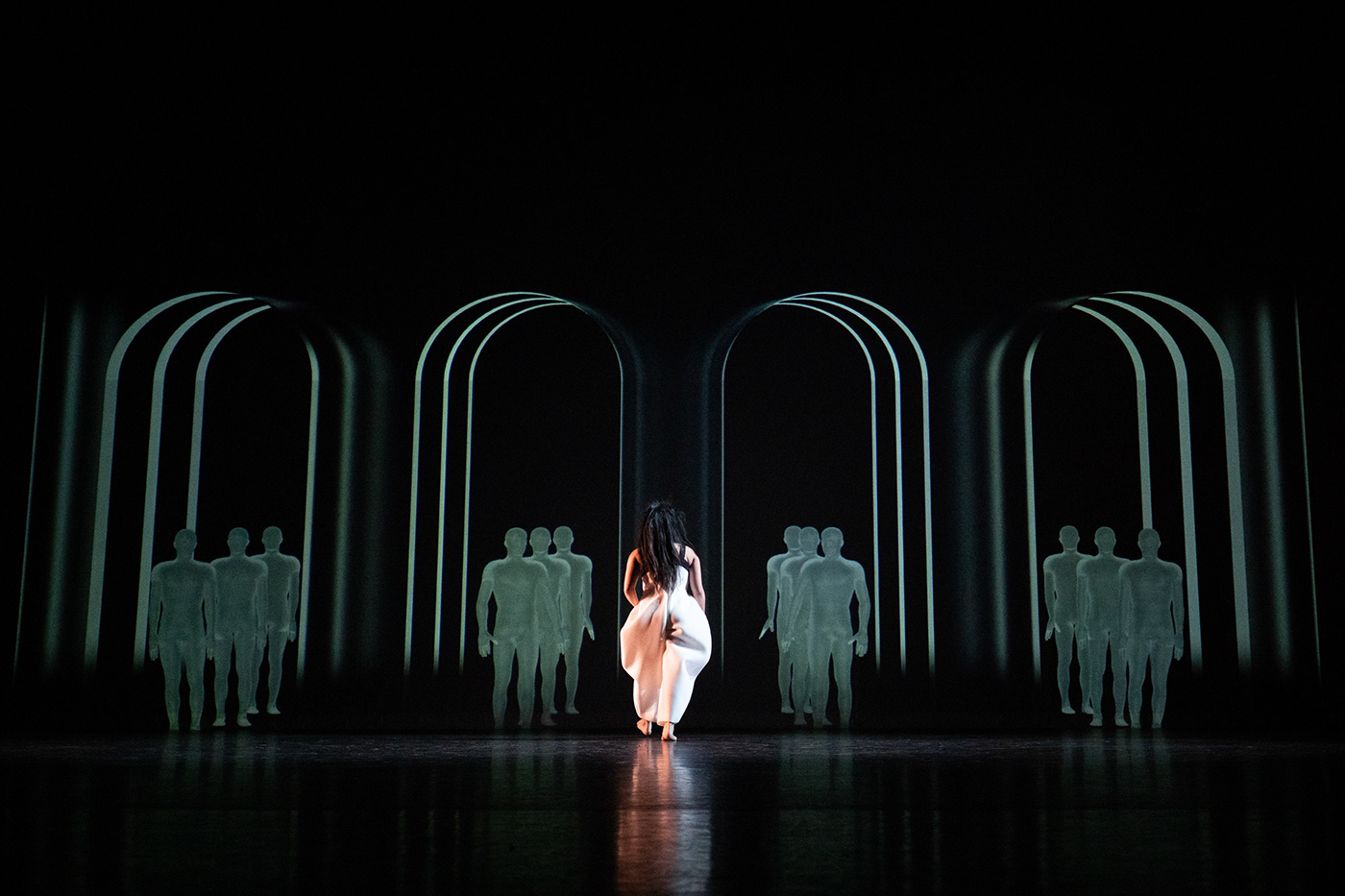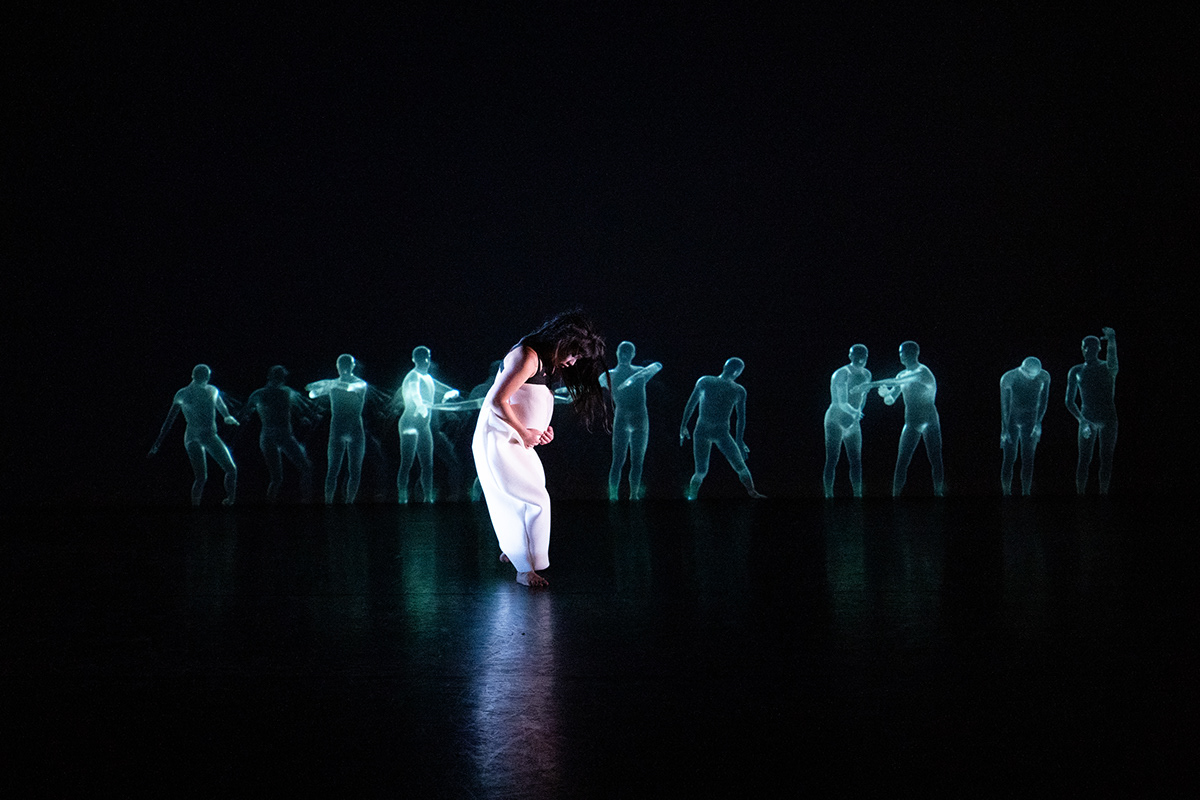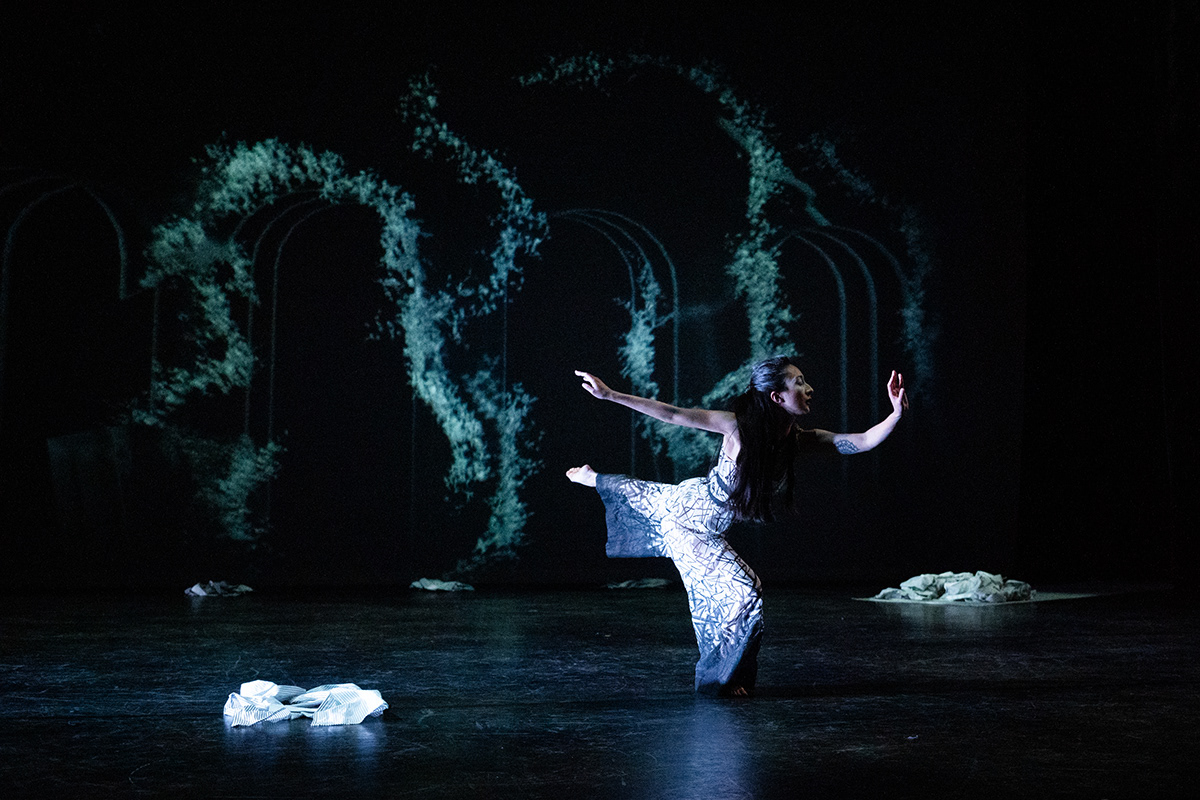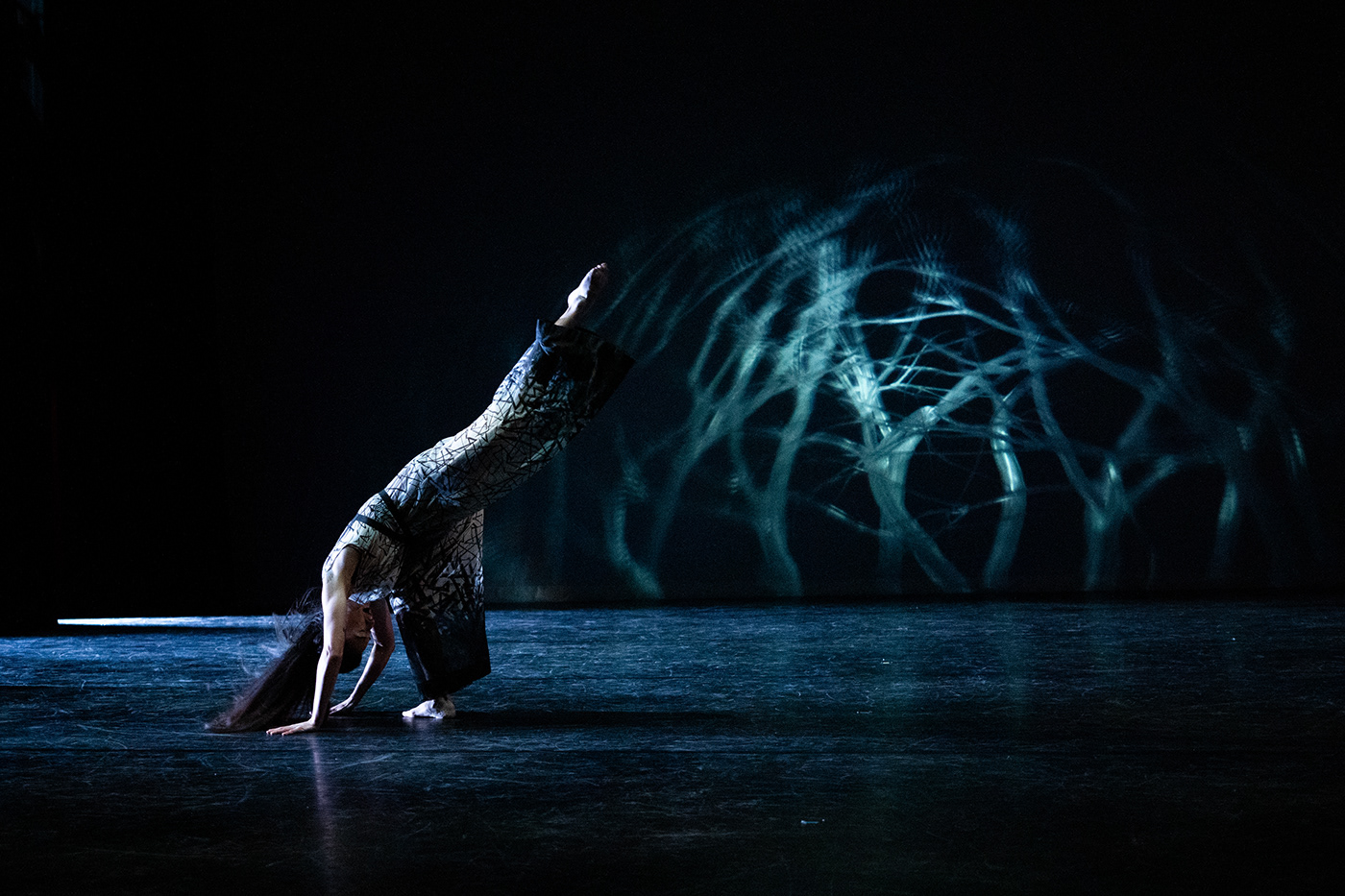The Twelve Brothers is a 44 minute multimedia ballet performance co-produced by director-choreographer Ghislain Grellier and myself, a collaboration between dance and immersive projection. Two performances were held at UCLA’s Glorya Kaufman Dance Theater since its opening on March 6, 2020.
The story—based on a German fairy tale of the same name—centers around a young girl whose birth condemned her brothers to exile and tragedy. Through queens and witches, promises and curses, destiny and tragedy, she journeys to find them. The full narrative can be found here, originally published by the Grimm Brothers in 1812: https://www.pitt.edu/~dash/grimm009.html
The music for the entire piece is “Natursyphonie” (Nature Symphony) by classical German composer Siegmund von Hausegger (1911). The piece is divided into four movements, a dramatic, yet magical journey that parallels the ups and downs of the story.




Dancers (left to right): Anafe Ysabella Calderon, Sabina Schaffer, Miya Shaffer, Mizuki Sako
We wanted to tell the women’s story—the Mother (queen), the Sister (princess), and the Witch (evil)—in “The Twelve Brothers,” the characters not immediately obvious from the title. Rather than portraying the details of the royal family, or even differentiating the brothers, we chose to focus on the narrative arcs of each female character. The emotional and reflective nature of each character’s personal journey was the most important thing we wanted to capture on stage. Following their perspectives, we wanted the piece to be dreamlike and ominous, yet at times explosive and melodramatic.
Whereas dance is excellent at expressing emotional subtleties through movement, it can be difficult to depict more literal narrative elements and symbolic imagery without dialogue or miming. Projecting digital imagery helps move the story along, giving both structure and context to the dancer’s expressions. It is able to portray the environment of the dancer, changing the tone and atmosphere of the stage as a light source. It bathes the stage in virtual imagery, an ephemeral world that appears and disappears with the dancers and shadows.
Digital media and dance should not compete for the attention. Thus they take turns, shifting focus from one to the other (and sometimes both at the same time) to create the performance. Some scenes the digital imagery supports the dance; in other scenes, the dance completes the projected visuals. Both mediums must come together to realize the mixed reality performance. Without projection, there would just be dancing in the dark. Without dancers, the projection would lose their anchor in the physical world.


The arched corridors appear thrice: introduced in the beginning with the Brothers, bathed in red at the Sisters birth, and finally eroded by time upon the (now grown) Sister’s realization. The progression of the arched corridors is in some ways the prequel for the Sister’s story, symbolizing the fate of the Brothers’ doom.

We used Noitom Motion Capture Suits with the dancers. The suits had various constraints when it came to dance movements, such as jumping, sliding, spinning, etc.

The brothers’ narrative is one of fate, loss, and transformation. They are exiled out of the kingdom into the unknown forest. In a sense their misfortune is predetermined by fate: they are stuck. As digital characters, the brothers are forever trapped behind the screen. They are flat and at the same time fleeting. They reach out to the physical characters, but have no way of closing the dimensional distance between them. All they can do is watch.


As digital characters, they have lost almost all individuality. They are indistinguishable from one another, acting more as a collective rather than twelve different characters.




We wanted to portray the forest and field of flowers as individual characters performing on stage, rather than as a background or prop for the dancers.
The forest is a place of the unknown, where the brothers are exiled to and where their sister must travel through to find them. It is the realm of loss and being lost. It is wild and chaotic. But it is also where one must go to confront their fears and reclaim what is theirs.




We want negative space to feel vast and immersive, like being lost in dreams. We want it at times to be oppressive, like the feeling of loss. We want the visual texture to be cold,distant and unreachable, like objects frozen in time.


White flowers have always been a symbol of innocence. As the Sister encounters them and treads on them, they are responsive to her movements like a duet with her in the lead. They carefully mirror her mood, one that is delicate and graceful. As the Sister loses her innocence and condemns her brothers to doom, the flowers reflect her destructive nature, swirling turbulently around her. She loses her control and becomes ravaged by the storm of dead flowers.




This style of architecture reappears in much more dramatic fashion at the beginning of the third movement, upon the entrance of our female prince, mechanically changing through the excitement of the wedding. The white light splits the darkness urgently as the story approaches its climax.








PRODUCTION MANAGER: Ginger Holguin
TECHNICAL DIRECTOR: Arsenio Apillanes
SOUND ENGINEER: Mark Goebel
STAGE MANAGER & PROD. ASSISTANT: Clara Auguste
PRODUCTION CREW: Kenny Valera, Sarah Borton, Cheyenne Dixon, Alexandra Wood, Alexis Iritani, and Kyra Sakamoto
TECHNICAL DIRECTOR: Arsenio Apillanes
SOUND ENGINEER: Mark Goebel
STAGE MANAGER & PROD. ASSISTANT: Clara Auguste
PRODUCTION CREW: Kenny Valera, Sarah Borton, Cheyenne Dixon, Alexandra Wood, Alexis Iritani, and Kyra Sakamoto



